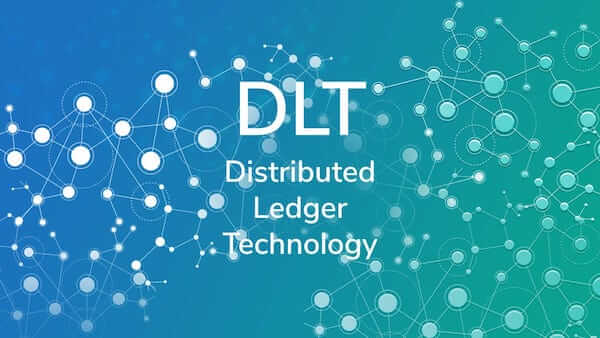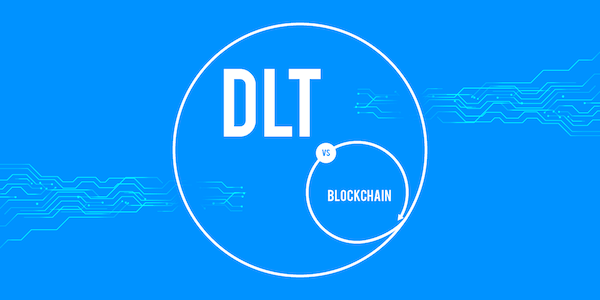Table of Contents
- What is Distributed Ledger Technology?
- The Beginnings of Ledger Systems
- Examples of Distributed Ledger Technology
- The Significance of Distributed Ledger Technology (DLT)
- Benefits of Distributed Ledger Technology
- Blockchain and Distributed Ledger Technology (DLT): Their Interconnection and Distinctions
- The Outlook for Distributed Ledger Technology
What is Distributed Ledger Technology?
Distributed Ledger Technology (DLT) refers to a consensus mechanism involving the replication, sharing, and synchronization of digital data across multiple geographically dispersed locations, encompassing various sites, countries, or institutions. Unlike a centralized database, DLT operates without the need for a central administrator, eliminating the risk of a single point of failure.

In a broader sense, the functionality of a distributed ledger hinges upon a peer-to-peer (P2P) computer network and consensus algorithms that ensure the dependable replication of the ledger across distributed computer nodes, including servers and clients. The most prevalent manifestation of distributed ledger technology is blockchain, which can be deployed on either a public or private network. Overcoming infrastructure challenges for data management remains a common obstacle in the adoption of DLT.
In certain instances, when the distributed digital data primarily serves as an accounting journal rather than a ledger, an alternative term is employed: RJT, signifying Replicated Journal Technology.
The Beginnings of Ledger Systems
The concept of ledgers dates back centuries, serving as a fundamental tool for recording financial transactions. Traditional ledgers were centralized and paper-based, making them susceptible to errors, fraud, and loss. The digitization of these ledgers laid the foundation for modern DLT, leveraging cryptographic techniques and distributed consensus algorithms to ensure accuracy and security.
Examples of Distributed Ledger Technology
DLT's impact stretches across various domains. In finance, platforms like Ripple are revolutionizing cross-border payments, while Corda is enhancing the efficiency of complex financial agreements. In supply chain management, VeChain offers traceability and transparency, reducing fraud and ensuring product authenticity. Additionally, DLT finds applications in healthcare, voting systems, and intellectual property protection.
The Significance of Distributed Ledger Technology (DLT)

DLT's importance lies in its ability to address critical challenges of traditional systems. Its decentralized nature eliminates the need for intermediaries, reducing costs and delays. The transparency it offers builds trust among participants, while its tamper-resistant design enhances security. These attributes have the potential to reshape industries, improving efficiency, accountability, and customer experiences.
Benefits of Distributed Ledger Technology
Transparency: Every participant has a copy of the same ledger, reducing information asymmetry and ensuring trust.
Security: DLT employs cryptographic techniques, making data alteration extremely difficult and enhancing overall security.
Efficiency: With no intermediaries, processes are streamlined, reducing delays and costs.
Decentralization: Eliminates single points of failure and control, enhancing system resilience.
Traceability: DLT enables real-time tracking and auditing of transactions, providing an immutable record.
Blockchain and Distributed Ledger Technology (DLT): Their Interconnection and Distinctions

While often used interchangeably, blockchain is a subset of DLT. Blockchain is a specific type of DLT that arranges data into "blocks" linked in chronological order. However, DLT encompasses various protocols beyond the blockchain, such as Directed Acyclic Graphs (DAGs) and Hashgraph. The key distinction lies in their consensus mechanisms, scalability, and use cases.
The Outlook for Distributed Ledger Technology
DLT's future is incredibly promising. As technology advances and scalability challenges are addressed, DLT's adoption is poised to expand. Sectors like finance, supply chain, and healthcare will continue to benefit from increased efficiency and security. Interoperability among different DLT platforms will likely rise, fostering collaboration and unlocking new possibilities. As DLT matures, it will drive the evolution of digital ecosystems, shaping a more transparent, efficient, and interconnected world.
Conclusion
Distributed Ledger Technology is no longer a concept confined to the realm of technology enthusiasts. Its real-world applications, benefits, and transformative potential have propelled it into the spotlight of industries worldwide.
As DLT continues to evolve and integrate with other cutting-edge technologies, its capacity to revolutionize data management, streamline processes, and build trust remains at the forefront of the digital revolution. Embracing DLT is not just an option; it's a strategic move towards a more efficient and secure future.






